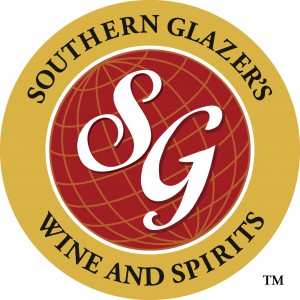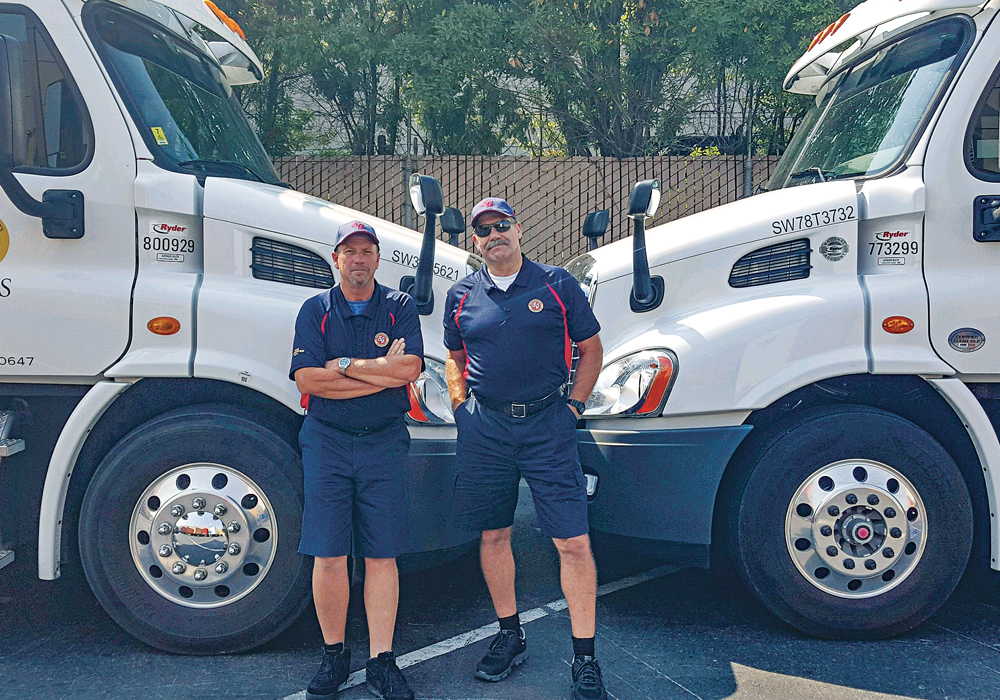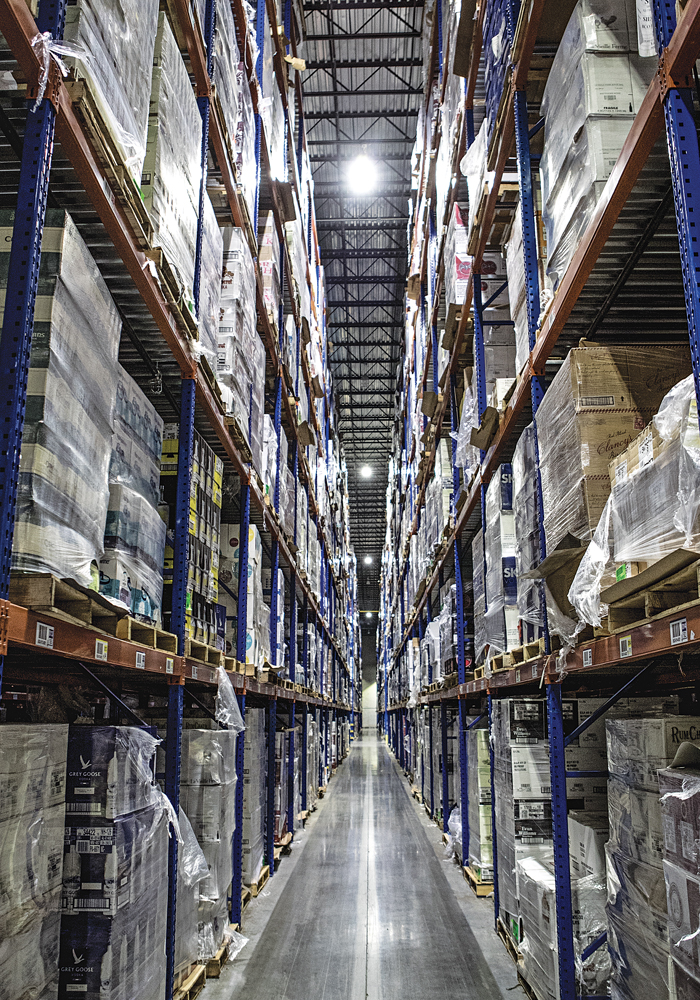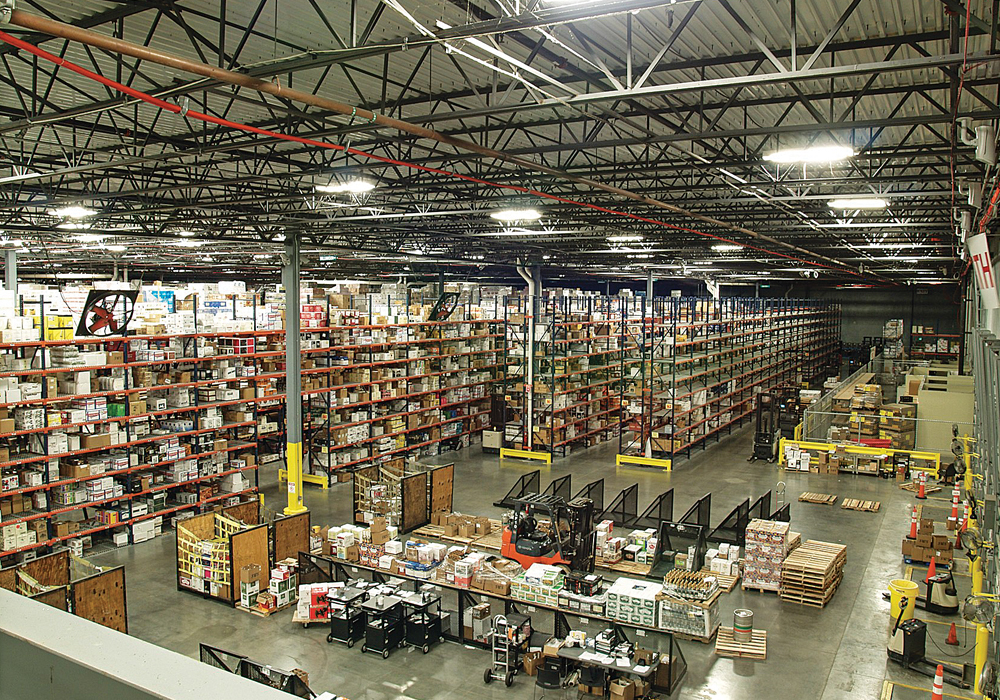Southern Glazer’s: A History of Growth
Primary tabs
It’s been nearly two years since two of the most respected distribution companies in the alcohol beverage industry joined forces to become Southern Glazer’s Wine & Spirits, the largest company of its kind in North America.
Combinations like these present their own set of unique challenges, which the company has tackled head-on. The transaction also resulted in one large business benefiting from the resources of both its parent companies, giving Southern Glazer’s an opportunity to evolve in ways that would have been virtually impossible before.
“This business is all about having the right product at the right time in the right place at the right price,” says Shelly Stein, president of Southern Glazer’s. “It sounds simple, but it’s actually really hard to do. We were faced with integrating massively complicated logistics across all areas of our business, and now we truly believe that we have the structure in place to deliver the best portfolio of products available in the market.”
Along with an extensive product selection, the company also boasts impressive figures. In the 2017 fiscal year, Southern Glazer’s distributed 172 million cases of product and has projected revenue of $18.2 billion. Several years ago, numbers like that would have been unimaginable for both companies, but as a result of the partnership, it appears that just about anything’s possible.
The Story of Two Companies
 This dynamic powerhouse is the result of the partnership between two savvy, family-owned businesses that existed independently for many years before finally combining. Glazer’s was originally founded in Dallas, Texas, back in 1909 by Lou Glazer and his wife, Bessie. Their first venture was known as the Jumbo Bottling Company, a business that consisted of distributing flavored soda water from the back of horse-drawn wagons. The company continued to grow at a steady pace, eventually establishing itself as a leader in the central part of the country.
This dynamic powerhouse is the result of the partnership between two savvy, family-owned businesses that existed independently for many years before finally combining. Glazer’s was originally founded in Dallas, Texas, back in 1909 by Lou Glazer and his wife, Bessie. Their first venture was known as the Jumbo Bottling Company, a business that consisted of distributing flavored soda water from the back of horse-drawn wagons. The company continued to grow at a steady pace, eventually establishing itself as a leader in the central part of the country.
By contrast, Southern Wine & Spirits was established in Miami, Florida, back in 1968–almost 60 years after Glazer’s was founded. Launched by several families, including the Chaplins, Southern began with a small portfolio of brands and expanded rapidly. By 1992 it rose to become the largest wholesaler of wine and spirits in the United States.
“Southern accomplished what no other company had done before,” says Wayne Chaplin, CEO of Southern Glazer’s. “In the ‘70s and ‘80s, this was a state-by-state business or even a city-by-city business. Our vision differed from competitors in that we didn’t take on many new partners over the years, while we were focused on growing our footprint.”
Meanwhile, Glazer’s geographic growth was limited, although it held steady as the fourth largest national distributor in the industry. However, while Southern attained the top position in the industry, it was unable to break into the the center of the country, which was Glazer’s sweet spot. A joint business venture seemed appealing to both companies, and formal talks about combining Glazer’s and Southern were held in 2008. Those talks ultimately fell through, however, and both companies maintained their separate business operations for nearly seven more years.
During that time, Southern continued expanding to additional states, while Glazer’s focused on improving internal operations. Stein, who had served as a longtime advisor to Glazer’s, was brought on to run the company in 2010 by then-Chairman and CEO Bennett Glazer. Stein orchestrated a comprehensive restructuring, which resulted in growing Glazer’s from a $2.8-billion company to a $4.3 billion company in less than five years. Stein also became acquainted with Harvey Chaplin, who at the time was Chairman and CEO of Southern. After lengthy conversations, leadership teams for the two companies reintroduced the idea of a possible joint venture between them.
“At that time, we were a regional player in 15 states, and only had one footprint market,” says Bennett Glazer, who now serves as Southern Glazer’s Executive Vice Chairman. “Southern was in four footprint markets and in 35 states. We knew we’d be at a disadvantage if we stayed on our own and had to compete with larger players like Southern. And we had the big advantage in the market Southern wanted to break into, so they’d had their eyes on us for a while. We knew that Southern was the only fit for us.”
Harvey Chaplin, now Chairman of Southern Glazer’s, agrees.
“The key was to come together as two families and make sure to build this universal footprint and focus on adding long-term value,” he says.

This second time around, the idea stuck. Southern Glazer’s Wine & Spirits officially formed in 2016, creating the largest beverage alcohol distribution company in North America. Combining two huge companies is no small task, and several integrations are still in process nearly two years after the partnership began. However, Southern Glazer’s was extremely lucky on two fronts that could easily have been much more complex. First of all, the company decided to integrate its senior leadership team. Members of the Chaplin and Glazer families remain at the helm. Along with the Chaplins, Glazer assumed the role of Executive Vice Chairman. Mel Dick, one of Southern’s original founders credited with building the company’s wine business, now serves as President of the Wine Division and Senior Vice President of the company. Stein moved into the role of President of Southern Glazer’s once the transition was complete.
Stein describes the management transition as being a virtually seamless experience.
“Going into this, we didn’t really know what kind of partnership we were going to have,” he says. “We hoped for the best, but you never really know how everyone’s personality will mesh until you find yourself in that exact situation. We really lucked out because it’s been so great. We’re all really close friends and we all get along. It doesn’t always happen that way.”
Glazer echoes that sentiment.
“We operate like a family. Everyone treats me like a founding member of the family, and you can’t ask for much more than that,” he says. “Whenever an issue comes up, we address it together as a team and it always works out. I have the utmost respect for the Chaplins and what they bring to this company. They are genuinely great partners and our management team is very capable. I have complete faith in them.”
The two companies also received enthusiastic support and buy-in from their thousands of employees, who recognized that combining businesses would result in a new company being the biggest player in the industry.
Another aspect of the combination that could have been incredibly complicated is integrating operational processes across states. Fortunately, that was virtually a non-issue. Because Glazer’s primarily operated in the central part of the country and Southern dominated both coasts, there was very little overlap once the two companies joined forces. Indiana was the only state where both companies had a pre-existing footprint. It took about nine months to move Indiana state operations into one warehouse and a combined, integrated system.

Southern Glazers’ team is more than 22,000 strong, from truck drivers to warehouse managers to brand teams.
Striving for Growth and Excellence
When the two companies officially became one, growth swelled enormously. As a result of combining resources and markets, Southern Glazer’s immediately became an appealing choice for beverage suppliers. Right after the joint venture was announced, Bacardi named Southern Glazer’s as its sole national distributor in each of the markets it operated. Several other leading suppliers quickly followed suit, including Campari, Delegat and Mast-Jägermeister U.S. Stein is confident that more manufacturers will jump on the bandwagon soon.
“It makes sense,” he says. “We can cover 90 percent of all national account units with just one company. Why would you want to deal with 40 distributors when you can simplify the process and work with just one?”
With more than 20,000 employees, Southern Glazer’s currently distributes more than 172 million cases of wine and spirits annually across 44 states, the District of Columbia, Canada and the Caribbean. On the spirit side, vodka makes up approximately one-third of the entire portfolio and still continues to grow. Growth in the premium tequila and bourbon categories is also on the rise, as is an overall increase in Irish whiskey. Across the wine category, sparkling wines and rosés are having a tremendous resurgence. The company is seeing steady growth in domestic as well as international wines.

Southern Glazers’ warehouses distribute wine, spirits and brokerage materials to customers in 44 states, D.C., Canada and the Caribbean.
A great deal of the company’s success in these areas can be attributed to its commitment to employee training. Southern Glazer’s has more certified wine experts than any other North American wine and spirits distributor. Of the 47 Master Sommeliers in North America, 15 of them work for Southern Glazer’s. Employees have also completed more than 5,000 wine, sake and spirits education programs. Southern Glazer’s currently employs 15 Master Mixologists across North America who educate bartenders, beverage buyers and corporate clients about the latest trends in cocktail culture.
Mel Dick, president of the wine division and senior vice president, says it’s imperative to stay current with industry trends across the board in order to remain competitive and ultimately succeed.
“Everything we do needs to reflect the constantly changing market,” he says. “Consumers are more sophisticated than they were years ago. They’re more excited and knowledgeable about premium wines, and they’re willing to spend more on them because they want that special experience. We need to have the largest selection available to offer our customers and make sure they get into the hands of the consumers.”
Additional growth for Southern Glazer’s is certainly a priority for the leadership team, which hopes to eventually move into the five remaining states where it doesn’t operate, and explore new international opportunities as well.
“We have a blueprint to easily go into and execute in new markets,” says Brad Vassar, executive vice president and COO. “One of the benefits of being such a large company is that we have all the resources necessary to help us quickly transition into a new environment.”
It is those resources that are even more of a focus area for Southern Glazer’s than expansion efforts. When the two parent companies joined forces, an overwhelming amount of data from each one needed to be combed through and merged. That process will finally be complete as of June 2018. With so much data at its disposal, Southern Glazer’s now has access to a plethora of information that can help its employees (and its partners) make better business decisions. This directly ties to the overall vision of the company, which is to be the world’s preeminent selling, logistics and data insights company for the beverage alcohol industry.
Additionally, the company is committed to investing a tremendous amount of capital in proprietary analytical tools in order to help its suppliers and customers direct their efforts more efficiently. One example of this is the overhaul of Southern Glazer’s Salesforce automation.
“We used Salesforce to put a CRM tool in place for our salespeople to better plan and interact with our customers,” Vassar says. “We’re also rolling out some tools to allow us to interact with customers better on the e-commerce side.”
In order to continue building upon customer relationships and catering to the demands of tech-savvy Millennials who continue to be a driving industry force, Southern Glazer’s plans to roll out a new program later in 2018 that will allow customers to interact with the company in quicker, easier ways. An enhanced online ordering system is expected to launch as part of this initiative.
These investments are illustrative of Southern Glazer’s intent focus on continuing to improve the customer experience. Distribution is a service-oriented business and it can also be a high-cost business. As Southern-Glazer’s continues growing at a pace faster than the market, it recognizes the need to expand its resources in order to sustain that growth and maintain customer satisfaction. Additional investments in the areas of human resources and talent management aim to ensure that Southern Glazer’s continues to recruit and retain the best and most diverse workforce possible to make the goal of an exceptional customer experience a reality.
“My dad always says that our people are our most important resource, and that belief remains at the heart of this company,” Wayne Chaplin says. “We are focused on having good people and offering broader career path options to make sure they’re happy, successful and that they stay with the company for the long term.”
Southern-Glazer’s is also careful to define its customers broadly, looking at things from the perspective of suppliers, retailers and consumers themselves.
“We value all of our customer relationships,” Vassar stresses. “If we win with a customer, we then win with our suppliers. That’s the approach we’ve always taken.”
Family Values
Perhaps most important to the success of this innovative company are its core values, which the leadership team has memorized and which they believe are central to all the work that they do:
F Fulfill the potential of our suppliers and customers
A Aspire to excellence
M Mission and Vision driven
I Integrity and inclusiveness are our hallmarks
L Leadership in everything we do
Y You are critical to our success
Despite the challenges that arise from managing what has become such a large and complex organization, these family values are always top of mind at Southern Glazer’s. The founders’ mentality extends well beyond the company’s founding families: it shapes the employee culture of the organization itself, and also touches the suppliers and retailers that Southern Glazer’s serves.
“When you’re lucky enough to be where we are today, having started from very meager beginnings and come so far, you recognize all the people that helped along the way to bring you here,” Wayne Chaplin says. “We are so thankful to the many hardworking people who have worked for us over the years, and for all the support we continue to receive from our suppliers and our customers. We wouldn’t be here today without all of them.”

With more than 20,000 employees, Southern Glazer’s currently distributes more than 172 million cases of wine and spirits annually across 44 states, the District of Columbia, Canada and the Caribbean.
In an effort to pay it forward, Southern Glazer’s maintains a strong commitment to corporate social responsibility. The company supports multiple charities financially, and its employees donate countless volunteer hours each year. Some partner organizations include the American Red Cross, American Cancer Society, Meals on Wheels, Susan G. Komen for the Cure and many others. In 2017, employees were asked to vote for charities they thought would most benefit from a financial contribution. The four organizations with the most votes each received a $25,000 donation.
Southern Glazer’s is also firmly invested in education. Last year, the company committed to funding $150 million in scholarships in partnership with Step Up For Students, a nonprofit organization that helps manage the income-based Florida Tax Credit Scholarship Program. Southern Glazer’s regularly donates to the Florida International University Chaplin School of Hospitality and Tourism, which is named after the Chaplin family. The company also focuses on promoting responsible consumption, partnering with a number of groups to reduce teenagers’ access to alcohol. A recent example is a partnership with the Foundation for Advancing Alcohol Responsibility during March Madness in 2017. Southern Glazer’s distributed life-size cutouts of basketball legend Shaquille O’Neal promoting a responsible drinking message to off-premise accounts in the Final Four markets.
Looking to the future, Southern Glazer’s will focus on continuous internal operations improvements in order to provide the best possible service to its customers. Seeing all that this company has accomplished in less than two years’ time, the future of Southern Glazer’s is most certainly bright.
Melissa Sherwin is a freelance writer and marketing communications strategist from Chicago, IL. Her work has appeared in Chicago’s Daily Herald newspaper, Time Out Chicago, Suburban Life newspapers, and various magazines. She is also the author of several children’s books. Follow her @MelissaNSherwin.
- Log in to post comments
- 4712 reads
